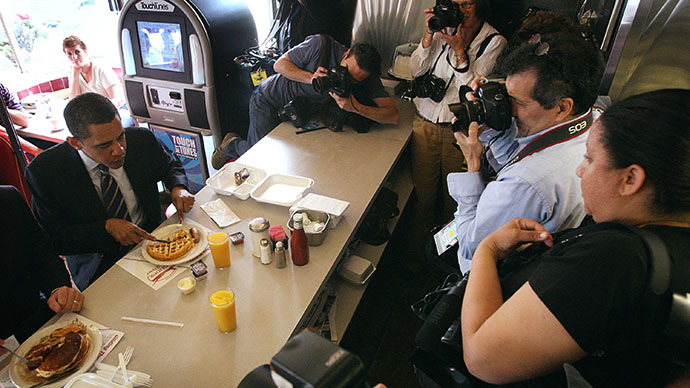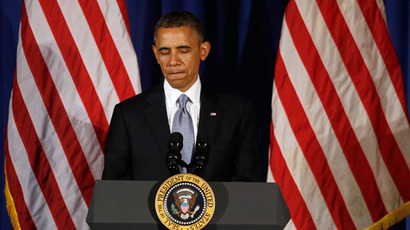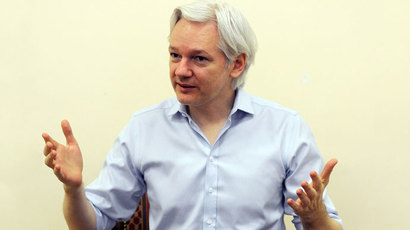Obama boycott: Major US news outlets refuse to use White House photos

The coalition of major news outlets protesting the White House’s photo policy continues to grow, with McClatchy newspapers adding their name on Wednesday to the list of publications that will no longer print official administration images.
McClatchy’s announcement that it will not be running official White House images in its papers except in extreme circumstances follows a similar promise made over the weekend by USA Today amid growing complaints waged by photojournalists and those in the news industry who oppose this administration’s tendency to exclude independent reporters from official events.
Last week, the Associated Press, ABC News, the Washington Post and Reuters all signed a letter to White House press secretary Jay Carney imploring the administration of President Barack Obama to provide photographers with increased access to the commander-in-chief. According to those outlets, this White House has more than any other administration prevented credentialed photographers from shooting images of the president, and instead has relied on Mr. Obama’s official photography team on a routine basis to exclusively take pictures to be disseminated among the press.
The selective nature of the White House’s process of hand-picking which images to release — as well as its shuttering of a free press — has raised numerous complaints as of late by news outlets and media experts. “Journalists are routinely being denied the right to photograph or videotape the president while he is performing his official duties,” last week’s letter reads. “As surely as if they were placing a hand over a journalist’s camera lens, officials in this administration are blocking the public from having an independent view of important functions of the Executive Branch of government.”
But while the AP-led campaign has indeed garnered the support of outlets like CNN, ABC, NBC, CBS and others, only McClatchy and USA Today so far have said they’ll be boycotting official images.
In a letter released Wednesday by McClatchy Vice President for News Anders Gyllenhaal, he said the organization “agreed not to publish photography issued by the White House,” but said it wouldn’t be a significant departure from current practice. Nevertheless, Gyllenhaal said, “we think it’s important to take a stance that helps sends the message that the limited access works against the public’s interests, diminishes the flow of information and often creates an inaccurate portraits of events in the White House.”
According to the company’s new stance, it will only make an exception to allow White House images to go to print in instances where access by a non-administration photographer “is not possible for national security reasons,” such as the Situation Room image shot of Pres. Obama and his national security team during the 2011 raid of Osama bin Laden’s Pakistani compound.
But while instances like the bin Laden assassination should indeed warrant some exclusivity, much more mundane — yet arguably still critically important — administrative activities have occurred, yet only before the eyes of official White House photographers. In a complaint posted on the AP’s blog this month, the company said that in addition to being prevented from documenting Mr. Obama’s first day in office, they’ve also been prohibited from shooting images of the president signing legislation and meeting with foreign visitors, including Pakistani student activist, Malala Yousafzai.
Instances where independent photographers have been shunned with seemingly no national security interest at risk, much organizations argue, is filtering news in such a way that only the White House’s intended message is broadcast while ensuring nothing captured through the point-of-view of a professional, un-biased photojournalist winds up on websites or newspaper pages. AP Director of Photography Santiago Lyon said earlier this month that the AP photographers have only been allowed to photograph Mr. Obama in the Oval Office twice since 2010, and never in instances where he’s joined by staffers.
“Previous administration regularly granted such access,” the AP has claimed.
“Unlike media photographers, official White House photographers are paid by taxpayers and report to the president,” Ron Fournier wrote for National Journal last week. “Their job is to make Obama look good. They are propagandists – in the purest sense of the word.”
As of 2013, the McClatchy Company has a presence in 29 US markets by way of 30 daily publications, including the Los Angeles Tribune, the Fort Worth Star-Telegram, the Charlotte Observer and the Miami Herald. USA Today boasts a daily print readership of more than 3 million, with another 24 million or so readers turning to their website every month.
During a routine press briefing on November 21, Deputy Press Secretary Josh Earnest told reporters that it is their responsibility “to push for more” access to the president. “You’re supposed to be agitating for more access. If you weren’t, you wouldn’t be doing your job. So the fact that there is a little bit of a disagreement between the press corps and the White House Press Office about how much access the press corps should have to the president is built into the system. Like I said, if that tension didn’t exist, then either you or we are not doing our job,” Earnest said.
Later, the deputy press secretary added, “we remain fully committed to trying to give you and the American public access to the president and as much insight as possible into how the president is spending his day, to what priorities the president has identified and what he’s actually doing to make progress on those priorities,” but defended the White House’s recent actions by insisting the administration has “used a range of new technology to provide people greater access to the president.”
“That there are certain circumstances where it is simply not feasible to have independent journalists in the room when the president is making decisions,” Earnest said. “So rather than close that off to the American public, what we’ve done is we’ve taken advantage of new technology to give the American public even greater access to behind-the-scenes footage or photographs of the president doing his job.”














